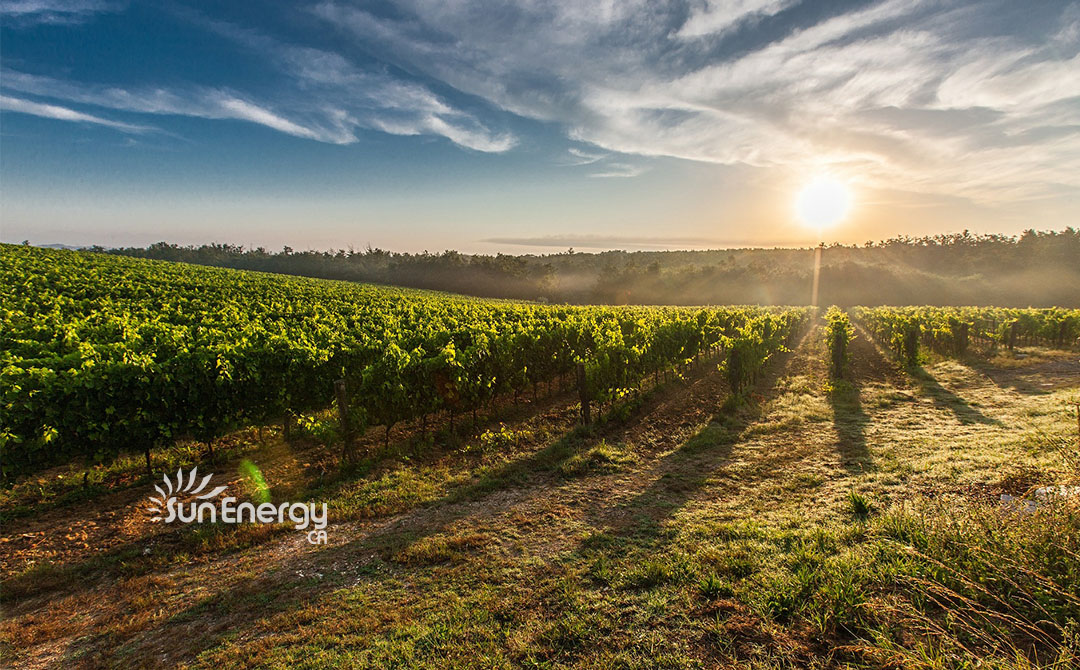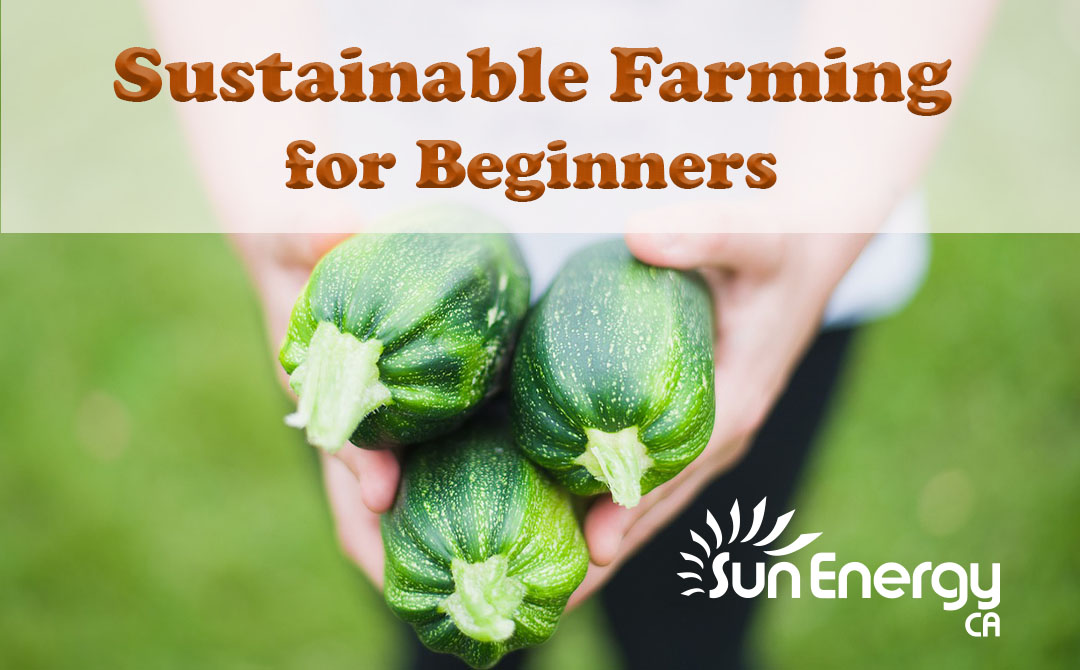If you’re one of the many people in which the current pandemic has caused you to reconsider where you live, how you live, and things you can do to live better and more efficiently, then you’re in the right place.
This is especially true for the folks that live in rural areas and own bigger amounts of land. COVID-19 has encouraged many of us to look more into self-reliance and sustainability while enjoying more of the outside air – as opposed to sitting in front of the TV. Taking advantage of all we really have on our own doesn’t sound like a bad idea, right? In fact, many search engines we all use online have seen a significant increase in people searching for a small farm and sustainable living.
If you’re new to this entire concept, we’re hoping this post will help you be well on your way to establishing a better foundation for your sustainable farming goals.
How do I begin to start a sustainable small farm?
One of the most important things to remember in this is to be realistic and take your time. To maintain a small sustainable farm long term, tons of research, determination, and planning must go into it. And when we say research, we don’t just mean the occasional due diligence. We mean consistent, never-ending business planning, whether that’s marketing, securing equipment, infrastructure development, finding land, financing, and much more.
Our first recommendation would be to take baby steps and try indoor or backyard farming first. Start with tomatoes, peppers, or even cabbage. Learn everything you can about a few things at once and then expand from there.
Once you have this down, you can start the process of hobby farming. That is, of course, if you enjoy it. After getting your hands dirty in the beginning stages, you should be able to come to the determination of whether sustainable farming is for you.
We also found this awesomely helpful quiz from beginningfarmers.com to help you put things in perspective:
Quiz: https://www.beginningfarmers.org/the-beginning-farmer-quiz-do-you-have-what-it-takes/
The next step is to put yourself out there and get some real-world experience in the farming industry. In the world of huge commercial farming, the workers, and families in charge of the operations hone farming skills that were passed through many generations. However, this isn’t typically the case with small farming operations.
With smaller farms, the owners have had to take matters into their own hands and study to acquire the knowledge they need to run a successful small farming business. Some of the best ways to do this are by volunteering at local farms to learn the trade, self-study, and there’s even an option to go to farm school.
When it comes to learning the skills of farming, hands-on experience is going to be the most influential. This is especially true when learning about the hazards and dangers of farming. Finding an old-timer (preferably someone who has been in the farming industry for longer than you’ve been alive) to provide real-world stories, tips, and tricks, not only will provide you with valuable knowledge, but it will also keep you safer, as working in the agricultural business is extremely dangerous.

Once you get some real-world farming experience, it’s best to identify your niche. Do you know the kind of farm you want to start? If you do, it’s not always the best idea to jump in headfirst. You need to make sure that there is a local need for the type of farming you want to start.
This is marketing 101. Determining your target market and finding out what the community around you need and what their values are. Taking the time to do the market research before developing any business plan, is crucial to the overall success and longevity of your company. Grow products that have a localized demand or start your farm somewhere else.
Let’s say, for example, you’re new to the area, and don’t know much about the community. To learn more about your local market, visit the local farmer’s markets, meet other local farmers and producers, and speak to the customers at the event. What kind of products would they like to see more of? What is over-represented on the market? This is the best kind of market research you can do for the future of your sustainable business.
Next, you will want to reach out to your local state department of agriculture. If you’re based in California, you can do that here. Your state department of agriculture will have all the resources available on the latest farming information in your state, and will also have all the information on the kind of licenses you need to register for, along with local information on market access, food safety, and pesticides, etc.
Finding the Right Land for Sustainable Farming
So, you have figured out what you’re going to farm. You’ve found the need in your local area. You’ve gained the knowledge and skills. Now what? You’ve got to find the right land to sustain your farm on.
If you buy land, you’ll have total control of its use, but it can also be somewhat risky financially. This is one of the reasons many farmers opt to lease the land they farm on, especially for new farmers. They lease because it reduces financial risk and requires less money to begin with.
If you’re interested in leasing a few acres of farmland, look into finding people who own land, but aren’t doing anything with it. The owners of the land benefit from leasing it out to agricultural use because of the tax credits and because it raises the property value altogether.
When Looking for Land for Sustainable Farming, Consider This:
Access to Water
A steady supply of water is crucial for your plants, animals, and overall processing the needs of your business. Ask the right questions to ensure there is adequate supply available for your land options. Also, ask about pricing if the property is hooked up to a municipal water supply.
How Close the Land is to Target Markets?
Is the land in an ideal location when considering where you’re going to sell your products? If not, do you have the transport accessible to get the goods where they need to go?
Quality of the Soil
If you’ve done the research mentioned prior, you should know how vital high-quality soil is to farmers. The owner should have soil tests done. If they don’t, ask for one. You need recent soil test results, so don’t settle for any dated information, either. Knowing your soil will allow you to make proper predictions when it comes to the needs of fertilizer and supplements.

Your Neighbors
This can be a blessing or a train wreck, depending. Do they also have a farm? Are their practices and values in line with yours? What kind of pesticides do they use? Will it hurt your crop? All of these could impact your farm’s ultimate success. Make sure you meet your neighbors and get to know them. If you have a good relationship with those surrounding you, they can end up being your saving grace if and when something goes wrong (like if one of your goats or chickens gets out, for example). Hey! It happens!
Infrastructure and Facilities
What kind of buildings are on the land? Is there fencing for livestock? Produce stand or farm shop? Shelters for the animals? What about the facilities needed for processing your goods and produce? Crops and animals both require different processing and facilities, so these are important. Also, make sure you pay attention to the types of roads that lead to the land you plan on using. All of these can have an impact.
Sustainable Farm Financing
When you’re just starting out in the sustainable farming business, the thought of getting the appropriate financing can be overwhelming and scary. Good thing that Cornell University has a guide to planning and funding your farm business. Whatever you do, don’t take out a credit card loan. Trust us on this.
Marketing Your Products for Sale
When it comes to marketing and selling your products, there are a ton of options, with farmer’s markets being the most obvious. You can also sell your products through CSA (Community Support Agriculture), in which consumers purchase a share of the seasonal products for a set price in exchange for regular deliveries of the products as they are harvested. This is a popular model because you get your payment at the beginning of the season. Gee haw!
You can also investigate locally owned health food and grocery stores. And a local growers cooperative is also an option. This is where you team up with other producers to sell your products under a company.

Awesome Learning Resources for Beginning Sustainable Farming:
HELPX.net – A global site of small farms, rural B&B’s, where you can work in exchange for room and board to learn the trade through various internships and apprenticeships.
WWOOF – Pay-per-county list directory of organic farms around the world.
The 20 Best College Farms – Top 20 colleges for farming education.
Growing For Market – Popular farming magazine
Acres USA – Popular farming magazine
Permies – The largest permaculture site on the internet!
ATTRA – Database of internships and apprenticeships for aspiring farmers.

